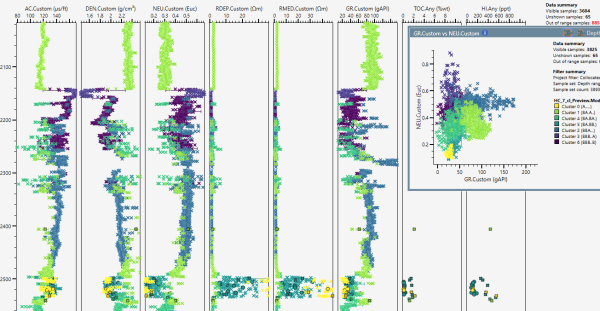Working with electronic logs
Overview
LAS data from composite logs can be helpful in understanding in a bit more detail the depth changes in your well data. Although not directly supported in p:IGI+ it is possible to use electronic log data in p:IGI+.
Version: 2.0+ (Oct 2021)
Usage: Detailed well studies - Import, Wells
How to use in practice
While p:IGI+ is not designed to work with electronic (comp) logs, it is possible to bring data in from LAS files. The simplest solution is to use the IGI File Transformation Service, which can convert LAS files to Excel data, in a format that p:IGI+ can import.
This can also be used to resample the LAS data to lower resolution, which can be appropriate if you want to compare LAS data with e.g. cuttings data that is representative of a depth interval of several meters.
To bring LAS data into current versions of p:IGI+ it is necessary to create project properties for the tracks you wish to include (although there are properties for bit size (BS), mud flow rate and rate of penetration (ROP) in the mudgas group which can be used for those parameters).

An example of the data is shown above. It can be helpful to use the collocation tool to enable you to compare geochemistry data with the log data, and the machine learning tools to process both the log data and the relationships between the log data and geochemistry.
If you do not have access to the IGI file transformation service then you would need to convert the LAS file to a simpler text file with headings for each data column, as p:IGI+ does not currently import LAS data directly. It is also important to remember that LAS data sets can be rather large, especially if you do not sub-sample, so we advise that you do not bring is large numbers of LAS files in regional projects.
© 2025 Integrated Geochemical Interpretation Ltd. All rights reserved.
